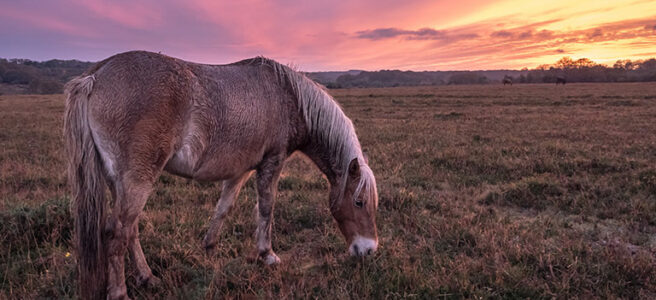A trip to the New Forest guarantees views of the National Park’s famous free-roaming ponies. We say free-roaming because they aren’t totally wild and they love to plod around the lanes and village high streets, often peeking over the hedge for a juicy bit of grass to nibble on. In the villages, you may see some visitors feeding them, but we’d strongly urge you to give them a wide berth. By all means, take photos – after all, you don’t often go shopping with ponies! But, be sensible, keep your distance and don’t pet or fed them. Not only can they bite, but they can throw a powerful kick!
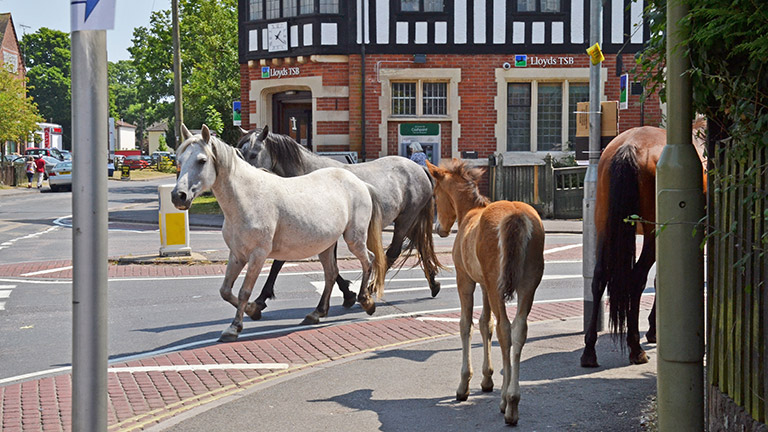
It’s estimated there are around 5000 ponies out on the forest, and each has an owner – a New Forest Commoner who practices the right of ‘Commoning‘. This is an ancient bylaw from nearly a thousand years ago when William the Conqueror commissioned the forest to be his private hunting ground. As you can imagine, the locals weren’t too happy to have William and his friends thundering through the forest. Especially so when William imposed strict rules and regulations, including that locals were only allowed to graze their animals in certain areas of the ‘common’, which is now recognised as the New Forest. Hence some of the locals (those who occupy a piece of land that has Commoning rights) are known as ‘Commoners‘, and they are the people who own the ponies.
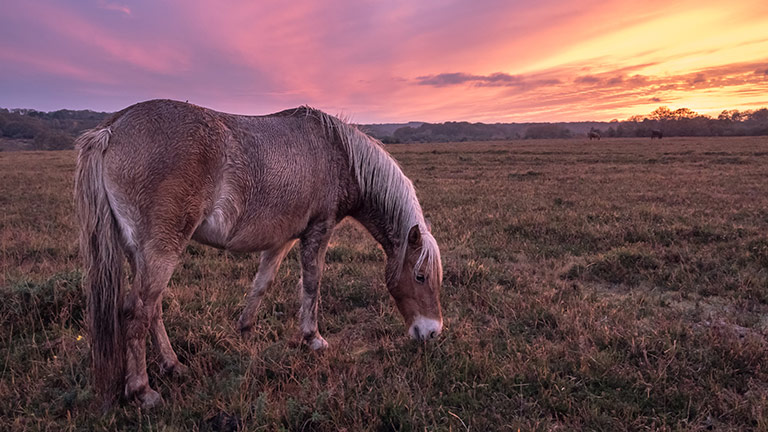
The New Forest Commoners pay an annual fee for each pony set free in the forest to the Agisters and Verderers who assist and govern Commoning Rights from the Verderers Court. Almost all the ponies are mares (female horses), although some geldings (castrated male horses) are also present. The ponies usually congregate in small groups consisting of an older mare, her daughters, and their foals. They tend to gather in one area in the forest known as a ‘haunt’ and rarely stray more than a two-mile radius, usually because they know where all the best grazing areas and water are.
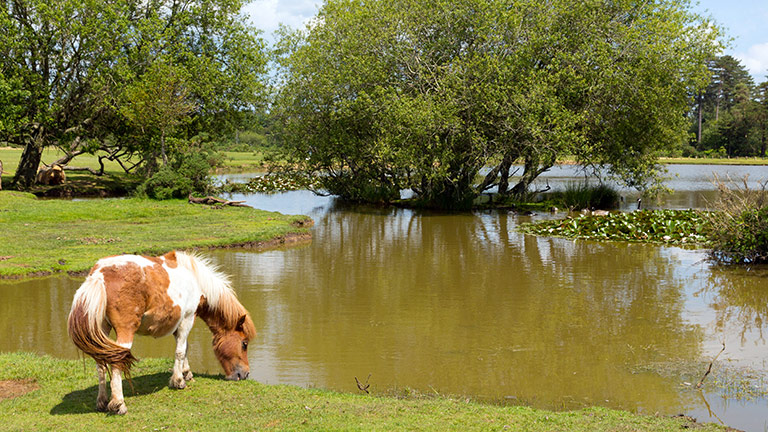
Registered New Forest stallions (males) are turned out to mate with the mares for a limited time between May and August each year. During their time free in the forest, the stallions gather groups of mares and younger ponies into a larger herd, which is theirs to defend against other patrolling stallions. The foals mustn’t be born too early in case the nutritious spring grass hasn’t grown, or too late in the season for fear of the weather turning cold.
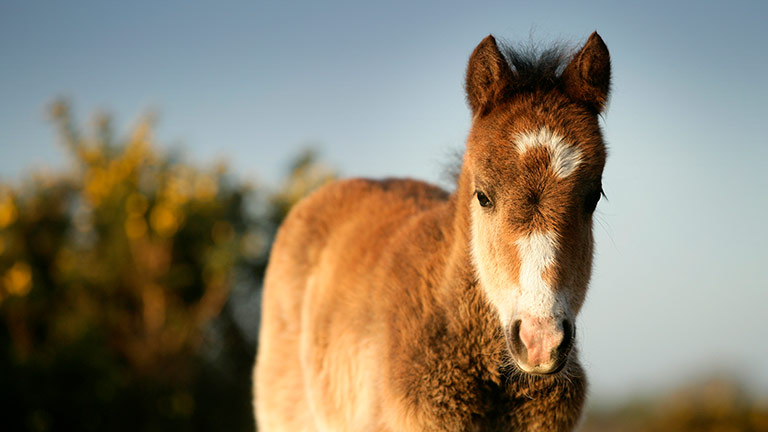
During the summer and autumn, the local Commoners and Agisters round up the ponies in what is called a ‘Drift’. The New Forest looks like something from the wild west with skilled horsemen and women skilfully cajoling and herding thousands of ponies into holding pens. The reason they do this is to check the ponies’ health, worm them, replace any lost reflective collars and brand the foals by cutting their tails in patterns which relates to which part of the forest they belong and who the Agister is. If it is deemed during the health check that a pony may not survive the harsh winter, they are taken off the forest and returned back in spring. Foals are also taken home to wean, and some may also be auctioned for sale at the forest’s Beaulieu Road Pony Sales as they are popular horses to break in and ride.
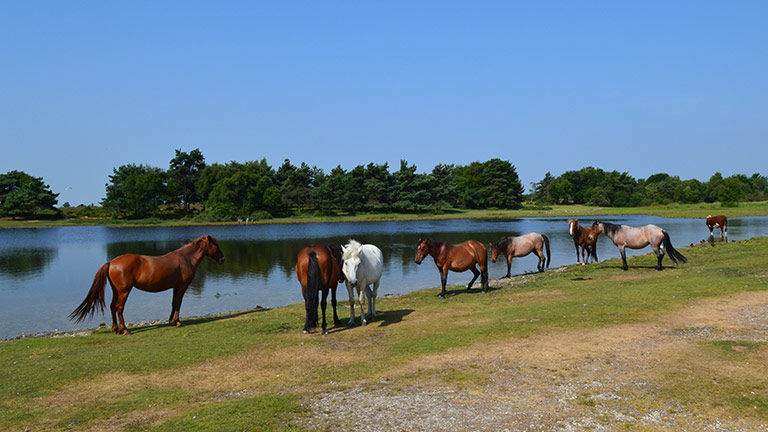
Ponies have been roaming the area since the Ice Age, and the region has benefited from their presence, keeping the ecosystem biodiverse with a plentiful array of wildflowers and birds that we are familiar with today – thus earning them the title ‘architects of the Forest’.
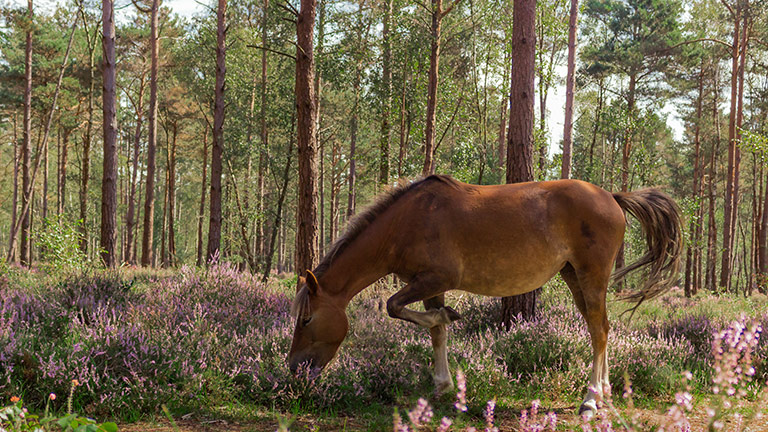
The more modern-day New Forest ponies are said to be of Spanish origin, curating the myth that horses swam from the sea of shipwrecks during the Spanish Armada. However, it is more likely that around that time, Spanish mares were stabled at the Royal Stud at Lyndhurst and maybe escaped into the forest or were bred. By the 19th Century, New Forest ponies began to be raced, New Forest colts (uncastrated male ponies four years old or younger) being particularly popular, thanks to their docility, strength, and speed.
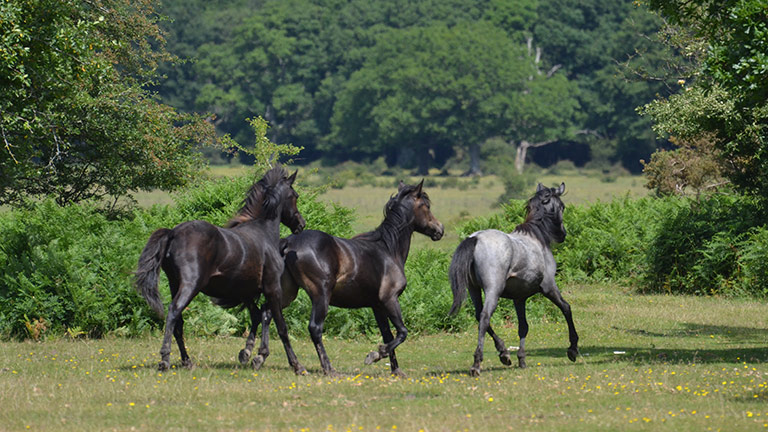
Because of their high value, the best colts were sold on, causing concern at the consequential poor standard of New Forest stallions. At the end of the century, to improve the breed, Verderers introduced four stallions of varying heritages into the area: Sprig of Shelagh (Irish origin), Exmoor, West Highlander and Brockenhurst. Over time, more varieties of breeds have been introduced to reduce the chance of inbreeding and improve the New Forest pony in general. Such breeds include Arabian, Thoroughbred, Welsh, and Hackney.
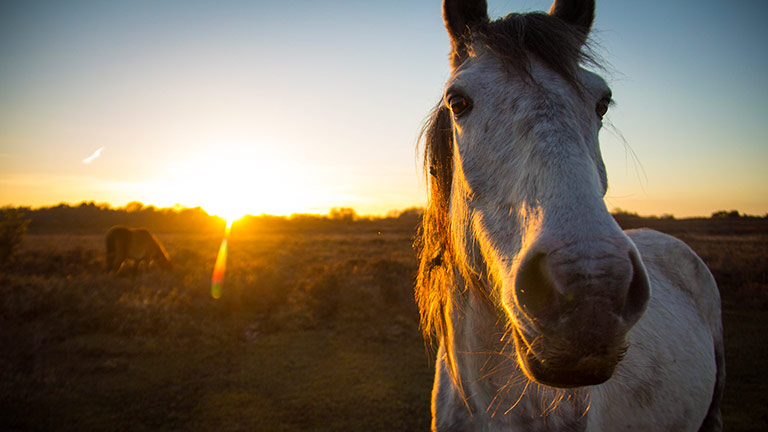
For a holiday in the New Forest National Park, book a break with New Forest Cottages. To see our full portfolio of more than 130 properties click here.

